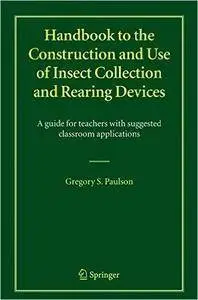Handbook to the Construction and Use of Insect Collection and Rearing Devices: A guide for teachers with suggested classroom applications by Gregory S. Paulson
English | 2005 | ISBN: 1402029748 | 121 Pages | PDF | 53.1 MB
English | 2005 | ISBN: 1402029748 | 121 Pages | PDF | 53.1 MB
Insects are great classroom study organisms. They are easy to collect and raise and have a fascinating array of life histories. Because they are small and have tremendous reproductive capacity ecological studies of dispersion, predation, parasitism and reproduction can be studied in compressed timeframes and small areas relative to similar studies of larger organisms. Insects are also important bioindicators of the health of ecosystems. In a small space and with very little cost colonies of insects can be raised in classrooms for use in behavioral and physiological studies. The purpose of this book is to explain how to build and use insect collecting and rearing devices and through explanations of the various techniques stimulate educators to explore the study of insects in their classrooms. Insects are often given little consideration with regard to humane handling practices. Please remember that insects are living creatures and, as such, are entitled to the same treatment as other living creatures. Teachers should remember that students look to them for clues to the proper way of behaving in new situations. When collecting and working in the “field” educators should teach students to respect the environment. Do not collect more organisms than needed, treat all of the organisms you collect with care, and try not to leave signs of your presence in an area by returning rocks, logs, etc. to their original locations. If you must kill animals you’ve collected, do so quickly and humanely.



